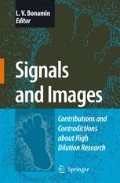More than 200 years ago, when Homeopathy was first conceived by Samuel Hahnemann, the scientific view was being consolidated within a mechanistic paradigm, whose lines had been drawn in the 17th century. That is to say, it was the task of science to know the material world from factual evidence, through observations and conclusions a posteriori, which included the formulation or the understanding of a mechanism. Still in our days, it may be said that for an explanation to be considered scientific, among other requirements it must posit a mechanism for one or more related phenomena (Maturana, 1997).
The development of mechanistic science from the 18th century on was explosive. A wide technological development followed, which perhaps would not have been possible if science would have remained under the limits of the religious authority, as it was during the middle ages (Atlan, 2007). However, the attempt to explain the world according to linear causality, characteristic of the mechanical view of classic science, is unable to reach categories, which take into account the whole and its reciprocal relationships (Amaral, 2007); it means that the mechanistic scientific explanations are unable to solve all the problems. Recently, vitalism has come back to the center of the stage, but in such a poorly structured way that it opens the door to deceitful speculations. On the other hand, the contemporary conception of the living beings and their properties grounded on the notions of semiosis and autopoiesis is an emergent reality (Maturana, 1997; Barbieri, 2007). Perhaps, this new direction may allow devising methods suitable to the demonstration of the similia principle not as a dogma, but as a simple biological phenomenon, available to systematic observation. In short: neither vitalism nor mechanicism, but both at one and the same time. A third paradigm, grounded on these two roots apparently opposed, may create a proper intellectual environment for a new understanding of the world, science, and – why not? – Homeopathy.
Access this chapter
Tax calculation will be finalised at checkout
Purchases are for personal use only
Preview
Unable to display preview. Download preview PDF.
Author information
Authors and Affiliations
Editor information
Editors and Affiliations
Additional information
In memoriam
Rights and permissions
Copyright information
© 2008 Springer Science+Business Media B.V
About this chapter
Cite this chapter
Bonamin, L.V., Lagache, A., Bastide, M. (2008). Research on Ultra-dilutions and the Theory of Corporeal Signifiers: The Follow Up. In: Bonamin, L.V. (eds) Signals and Images. Springer, Dordrecht. https://doi.org/10.1007/978-1-4020-8535-2_1
Download citation
DOI: https://doi.org/10.1007/978-1-4020-8535-2_1
Publisher Name: Springer, Dordrecht
Print ISBN: 978-1-4020-8534-5
Online ISBN: 978-1-4020-8535-2
eBook Packages: Biomedical and Life SciencesBiomedical and Life Sciences (R0)

